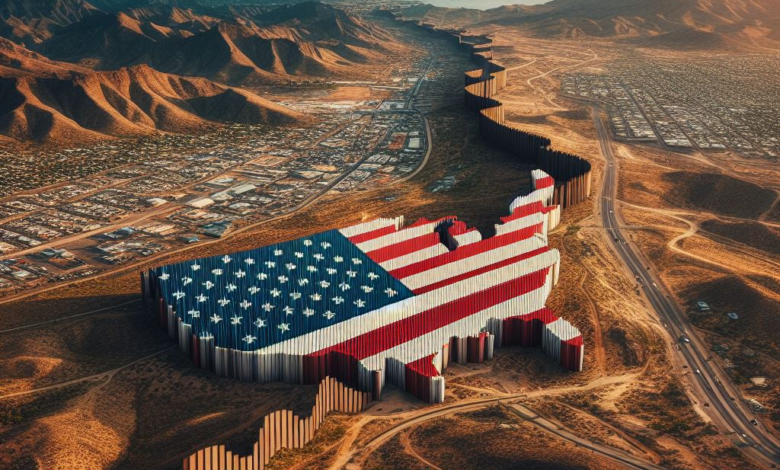Featured
The U.S.-Mexico Border: A Multifaceted Issue

The U.S.-Mexico border, stretching over 1,900 miles, is a zone of rich history, vibrant cultures, and complex challenges. While illegal immigration is a significant concern, it’s just one piece of this multifaceted issue.
Here’s a closer look:
- A Shared History: The border region has been a crossroads of migration and trade for centuries, with deep cultural and economic ties between the two countries.
- Migration Patterns: The flow of migrants across the border is complex. While some seek unauthorized entry, many others cross legally for work, tourism, or family visits.
- Economic Push-Pull: Poverty, violence, and lack of opportunity in Mexico contribute to northward migration, while the demand for labor in certain sectors of the U.S. economy pulls migrants north.
- Security Concerns: Drug trafficking and gang activity present security challenges along the border, requiring robust law enforcement measures.
- Humanitarian Crisis: Smugglers often exploit migrants, leading to dangerous journeys and tragic deaths in the harsh border environment.
- The Fence and Technology: The U.S. has built barriers along parts of the border, and continues to invest in technological surveillance. However, the effectiveness of these measures in curbing illegal crossings is debated.
- The Debate Over Reform: There is no easy solution to the issue of illegal immigration. Debates rage over border security, pathways to citizenship, and reforms to the guest worker program.
- The Humanitarian Response: Non-profit organizations play a vital role in providing food, water, and medical care to migrants crossing the border.
- The Economic Impact: Immigrant labor contributes significantly to the U.S. economy, particularly in agriculture and low-wage service sectors.
- The Social Impact: Immigrants enrich the cultural fabric of the United States, however, concerns about integration and competition for jobs also exist.
- The Responsibility to Address Root Causes: Strategies that address poverty and instability in Central American countries sending migrants north can be part of a long-term solution.
- The Role of Public Discourse: Disinformation and inflammatory rhetoric often cloud the complex realities of border issues, hindering productive solutions.
- The Human Cost: Beyond statistics, there are real human stories of struggle, hope, and sometimes tragedy.
- Seeking Refuge: Some migrants are fleeing violence or persecution, making them eligible for asylum under international law.
- A Delicate Balance: The U.S. has a responsibility to secure its borders, but also to uphold humanitarian principles and manage migration flows effectively.
- The Importance of Bipartisanship: Finding a comprehensive solution requires cooperation between different political parties.
- Lessons From History: Understanding the historical context of migration patterns informs the search for effective solutions.
- The Global Context: The U.S.-Mexico border issue is just one aspect of a larger global phenomenon of human migration.
- The Challenge of Integration: Creating a pathway to legal status and opportunities for immigrants strengthens the U.S. socially and economically.
- The Power of Collaboration: Collaboration between the U.S. and Mexico is crucial for managing migration flows in a way that benefits both nations.
A Complex Web
Looking beyond the headlines reveals a complex web of challenges and opportunities. A nuanced understanding of the border situation and a commitment to finding humane and effective solutions are essential for navigating this ongoing issue.




